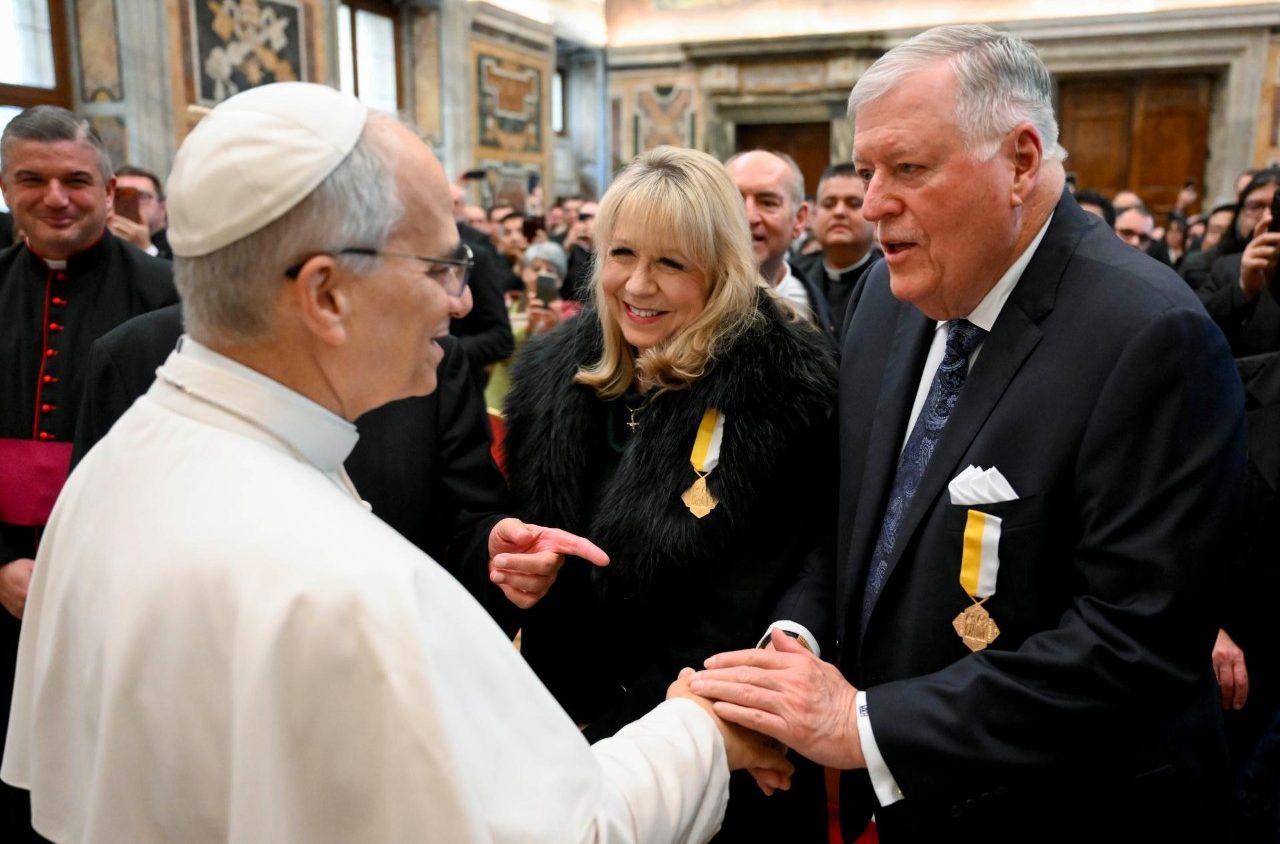Ten years after Pope Francis introduced a reform on marital nullity, Pope Leo XIV addresses members of a training course organized by the Roman Rota, urging them to discover the three dimensions of the marital process and how its end goal must always be the salvation of souls.
Vatican News
Meeting with participants of a Juridical-Pastoral Training Course of the Roman Rota, Pope Leo XIV highlighted that the “guiding thread” of their meeting is the 10th anniversary of Pope Francis’ reform of the marriage nullity process.
In his address to the Roman Rota on 31 January, the late Argentine Pope reflected on the goals and main changes of the reform.
In light of that, Pope Leo offered reflections based on the group’s course title: “Ten Years After the Reform of the Canonical Matrimonial Process: Its Ecclesiological, Juridical, and Pastoral Dimensions.”
Harmony of the three
The Pope highlighted how often the relationship between these three dimensions—ecclesiological, juridical, and pastoral—is forgotten because “there is a tendency to view theology, law, and pastoral care as separate compartments.”
He noted that it is common for the three to be implicitly pitted against each other, as if a stronger approach to one diminishes another. This often leads to the harmony that comes when all three are recognized as parts of the same reality being shrouded.
Pope Leo pointed out this unawareness of their interdependence comes mainly from the view that the juridical side of marriage nullity cases is simply something technical that only specialists are involved in. Otherwise, it is seen as a way to become a free person.
Yet, the Pope argued this is a superficial outlook that ignores the ecclesiological foundations of these processes and their pastoral meaning.
Two foundations
Two of these ecclesiological foundations are the sacred authority used in ecclesiastical judicial processes to uncover the truth, and the second is the object of the process for nullifying a marriage. This is the “mystery of the conjugal covenant.”
The judicial aspect, which deals with exercising power of governance or jurisdiction, “fully belongs to the broader reality of the sacred authority of the pastors of the Church.”
The Second Vatican Council named this authority as a service, he said. Within this judicial authority is the “diakonia of truth”—a fundamental aspect of pastoral service.
Each person, family, and community must have the truth of its ecclesial situation to be able to follow the path of faith and love.
In this framework, a person can find the truth of their personal and communal rights. The Pope explained, “Juridical truth declared in ecclesiastical processes is an aspect of existential truth within the Church.”
While “human judgment regarding marital nullity must not be distorted by false mercy…any action that contradicts the process’s service to truth must be considered unjust.”
However, true mercy must be exercised in proper judicial authority. Therefore, marital nullity can be seen as legal professionals meeting the need for justice in the faithful’s conscience.
Pope Leo highlighted that the “purpose of the reform, which aims at accessibility and promptness in the processes—never at the expense of truth—thus appears as a manifestation of both justice and mercy.”
An instrument of justice
Another theological foundation particular to this nullity process is marriage itself. When facing cases of nullity, it is essential to recognize the duty to uphold the truth of a concrete marriage, to discern before the Lord whether the mystery of una caro—the “one flesh” union—is truly present. This is a mystery that persists throughout the spouses’ earthly lives despite any breakdown in their relationship.
In the preface of the Motu proprio explaining the reason for the reform, Pope Francis reaffirmed the need to handle nullity cases in judicial processes so as to safeguard “to the highest degree the truth of the sacred bond” marriage requires.
In his address, Pope Leo reiterated that the judicial process should be seen as an instrument of justice, not a “cumbersome accumulation of procedural requirements.”
Both in the Church and in society, the Pope encouraged everyone to reach agreements to resolve disputes in marriages through mediation and conciliation, while ensuring justice. Yet, there are cases where the judicial process is necessary.
Two reveal a deeper meaning
When the ecclesiological and juridical dimensions are lived truly, the pastoral dimension is revealed. Pope Leo noted “pastoral care cannot ignore or underestimate the work of ecclesiastical tribunals, and the latter must not forget that their specific contribution of justice is one piece of the broader task of promoting the good of families, especially those in difficulty.”
Concluding, Pope Leo XIV explained that the three dimensions lead us to reaffirm the salus animarum—the salvation of souls—is the supreme law and ultimate goal of the marital processes in the Church.


